面向接口编程
英文:Interface-Oriented Programming
面向接口编程的思想,在项目中广泛应用。后台不直接做页面跳转,只向前端响应数据,响应的数据格式习惯用json,前端通过ajax和接口对接。
- 概念:API应用程序接口
如果程序功能只向前台提供数据不做页面跳转,我们该功能称为“应用程序接口” ,数据可以供给其他程序对接。
英文 “API”,简称“接口Interface” . API数据的格式有xml 或 json, 程序中习惯用json
-
真实应用: 生活中常用的社会公共服务器数据都是来源于第三方提供的接口。
-
第三方接口平台: 短信下发,快递查询,天气查询,手机归属地,航班和火车时刻,新闻头条等....
聚合数据:https://www.juhe.cn/
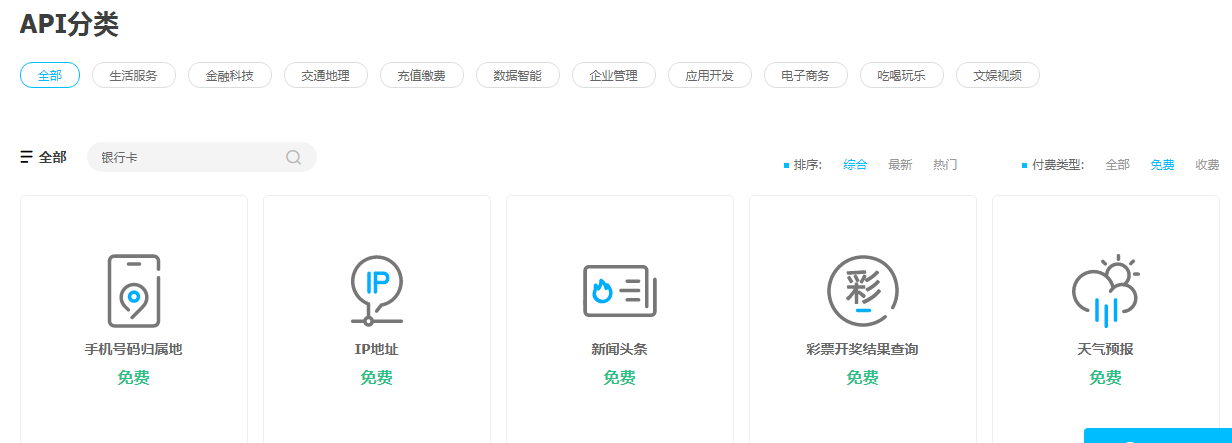
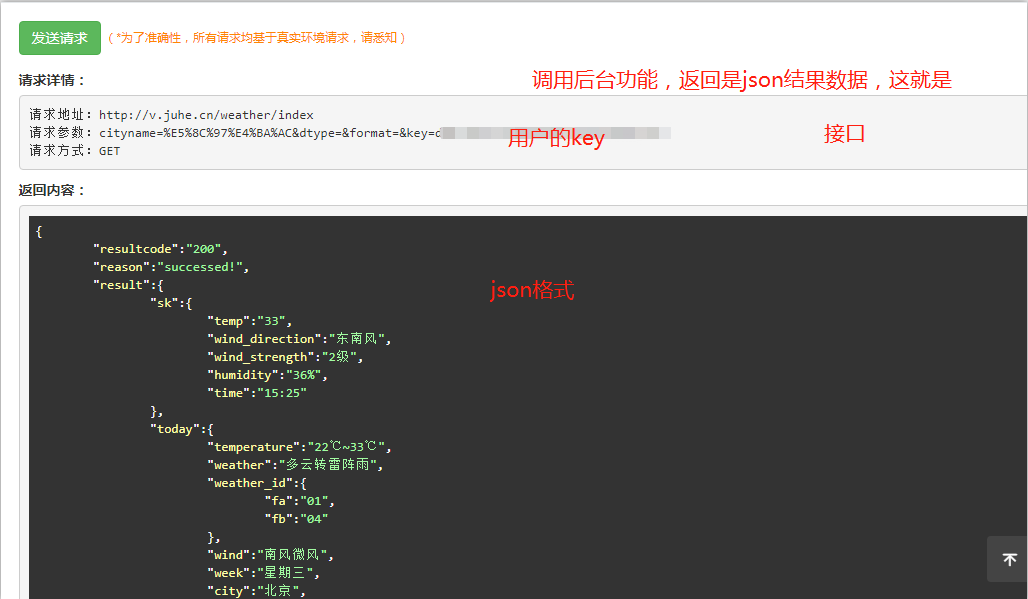
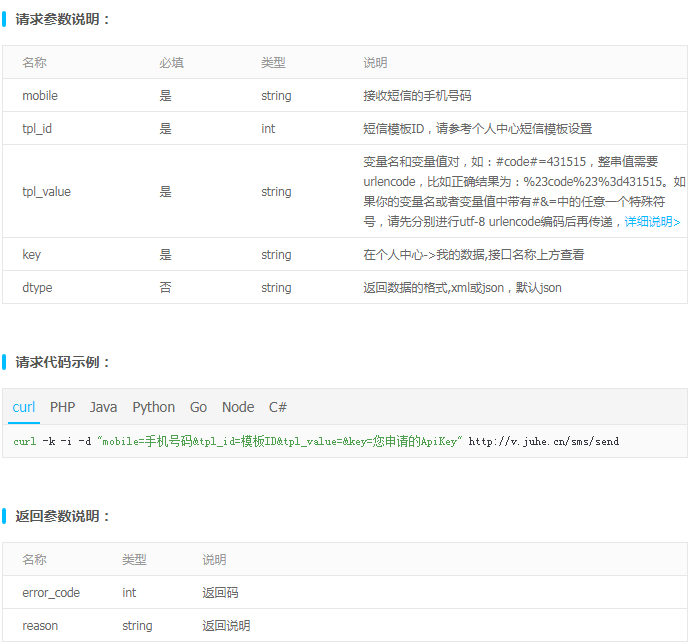
程序中我们可以模仿社会公开接口,写自己的接口。 使用接口开发的优点: 能实现代码复用,跨平台(手机,pc项目都可以调用)
Django实现后台接口(API)
特点
- 返回的数据格式 : json 字符串
在一个网站在,大量数据与前端交互,JSON是最好的传递数据方式了。
在Django中,使用JSON传输数据,有两种方式,一种是使用Python的JSON包,一种是使用Django的JsonResponse
使用Python的JSON包
- json.dumps(变量)
from django.shortcuts import HttpResponse
import json
def testjson(request):
data={
'patient_name': '张三',
'age': '25',
'patient_id': '19000347',
'诊断': '上呼吸道感染',
}
return HttpResponse(json.dumps(data))

怎么是乱码了?有中文的都是乱码了?这不是乱码,这是中文在内存中的二进制表现形式而已,使用JSON的转换工具可以看到中文的。
我们看一下Response Headers响应头,其中的Content-Type是text/html,我明明传的是JSON啊,怎么会变成字符串类型了?这是因为我们没有告诉浏览器,我们要传一个JSON数据,那么,怎么告诉浏览器呢?
HttpResponse是继承HttpResponseBase的,我们可以告诉浏览器,我要传application/json数据。我们稍微改一下content的值,看看会变成什么?
def testjson(request):
data={
'patient_name': '张三',
'age': '25',
'patient_id': '19000347',
'诊断': '上呼吸道感染',
}
return HttpResponse(json.dumps(data), content_type='application/json')
再访问网页:
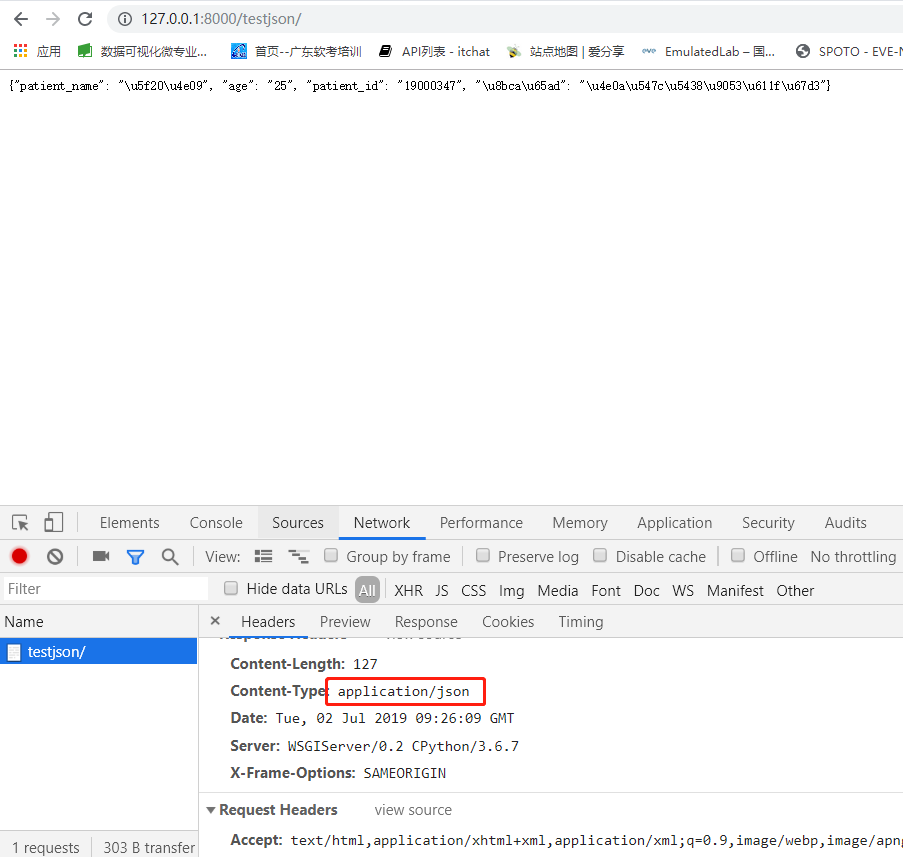
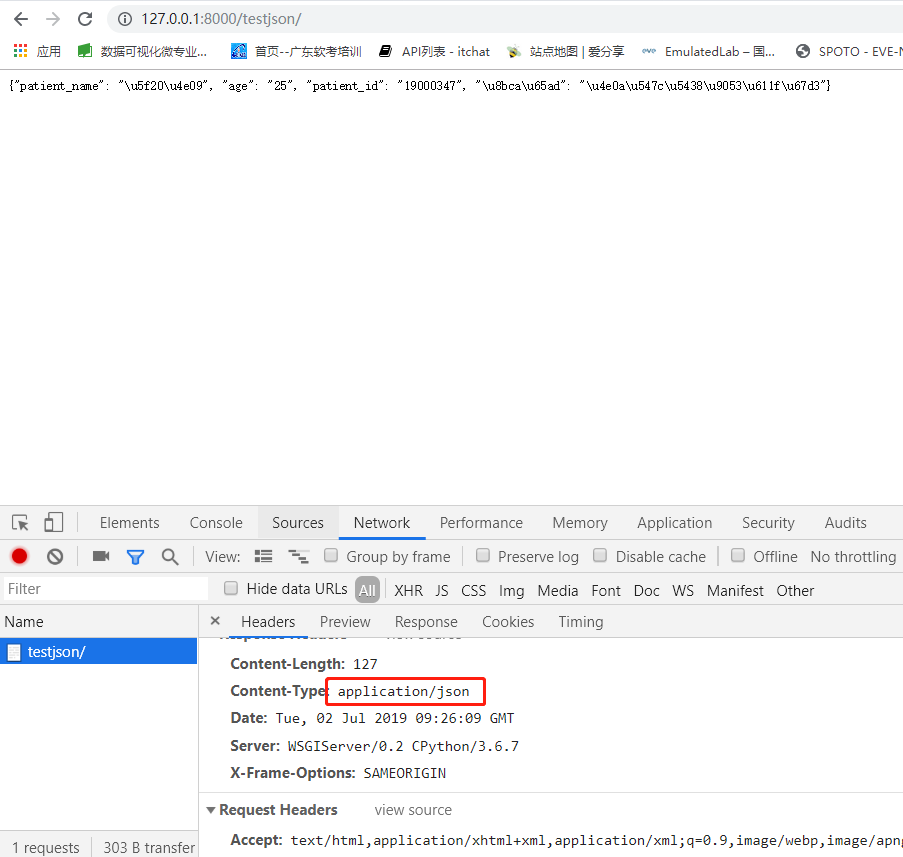
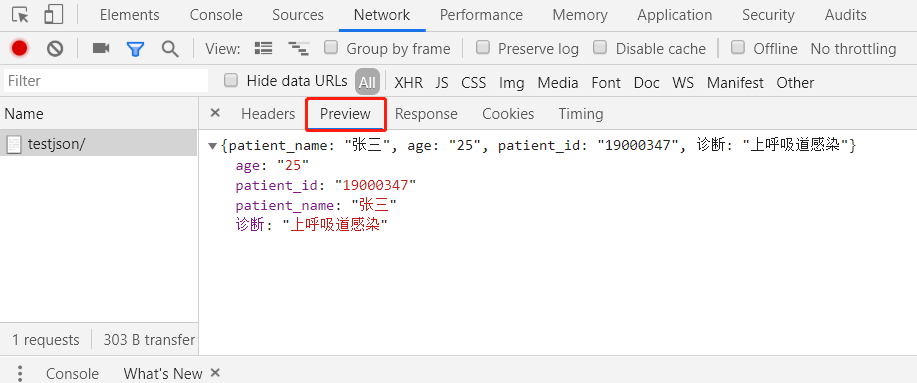
这下好了,是传输JSON了,在Preview中可以正常显示出来了。
使用JsonResponse进行传输。
def testjson(request):
data={
'patient_name': '张三',
'age': '25',
'patient_id': '19000347',
'诊断': '上呼吸道感染',
}
return JsonResponse(data)
访问网页:
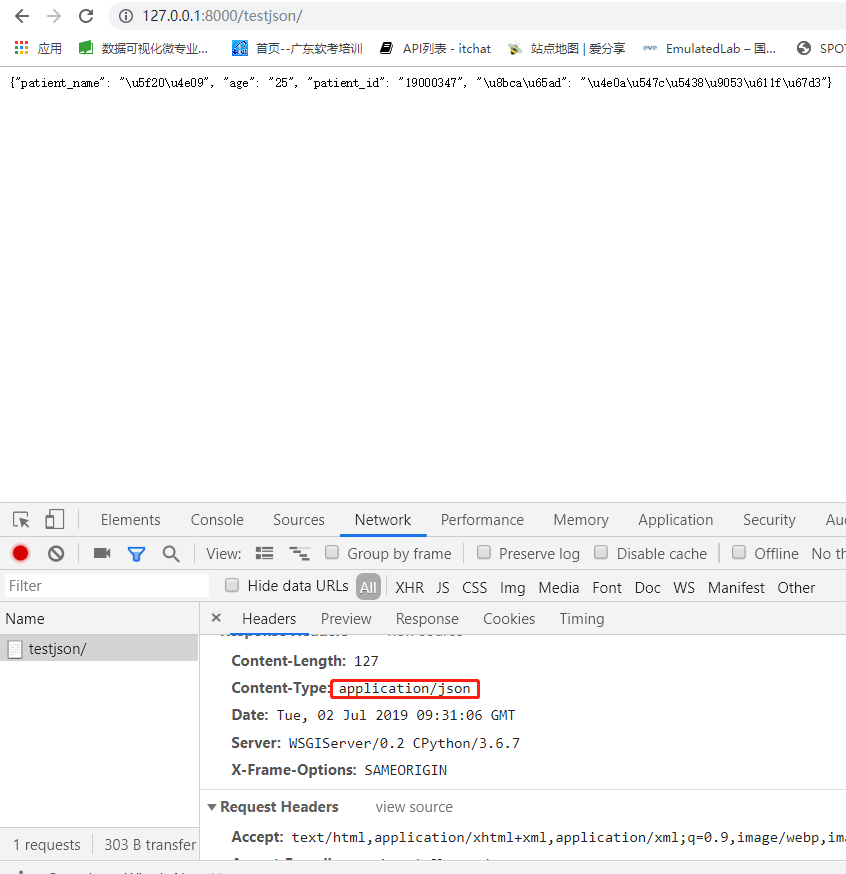
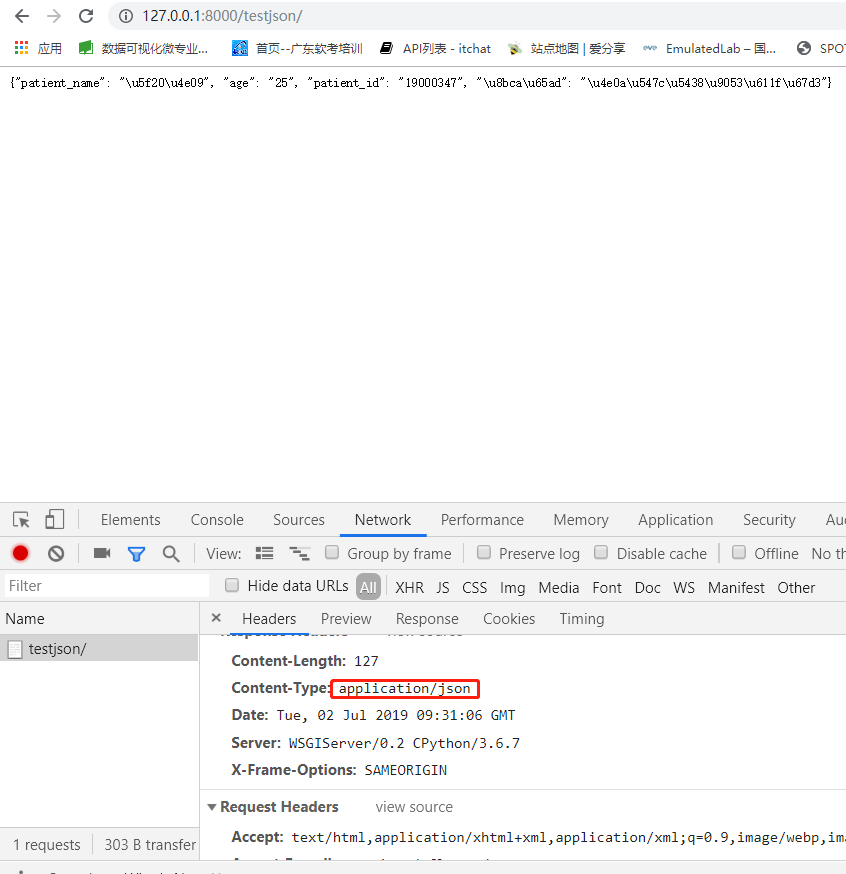
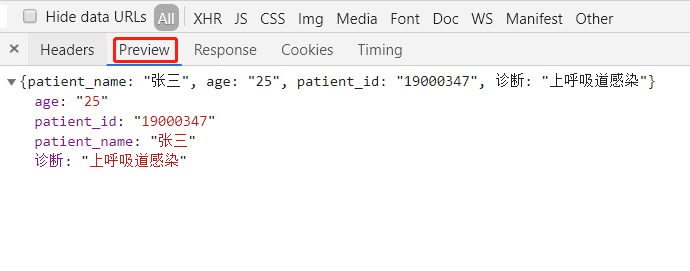
一切正常。
看一下JsonResponse的源码:
class JsonResponse(HttpResponse):
"""
An HTTP response class that consumes data to be serialized to JSON.
:param data: Data to be dumped into json. By default only ``dict`` objects
are allowed to be passed due to a security flaw before EcmaScript 5. See
the ``safe`` parameter for more information.
:param encoder: Should be a json encoder class. Defaults to
``django.core.serializers.json.DjangoJSONEncoder``.
:param safe: Controls if only ``dict`` objects may be serialized. Defaults
to ``True``.
:param json_dumps_params: A dictionary of kwargs passed to json.dumps().
"""
def __init__(self, data, encoder=DjangoJSONEncoder, safe=True,
json_dumps_params=None, **kwargs):
if safe and not isinstance(data, dict):
raise TypeError(
'In order to allow non-dict objects to be serialized set the '
'safe parameter to False.'
)
if json_dumps_params is None:
json_dumps_params = {}
kwargs.setdefault('content_type', 'application/json')
data = json.dumps(data, cls=encoder, **json_dumps_params)
super().__init__(content=data, **kwargs)
其内部也是通过json.dumps来把数据转换为JSON的,其还可以转换为list类型。我们再来改一下testjson
def testjson(request):
listdata = ["张三", "25", "19000347", "上呼吸道感染"]
return JsonResponse(listdata)
程序报错了

报错为:In order to allow non-dict objects to be serialized set the safe parameter to False,它的意思是转换为一个非字典的类型时,safe参数要设置为False,还记得上面JsonResponse的原码吗?其中就有
代码修改为:
def testjson(request):
listdata = ["张三", "25", "19000347", "上呼吸道感染"]
return JsonResponse(listdata, safe=False)
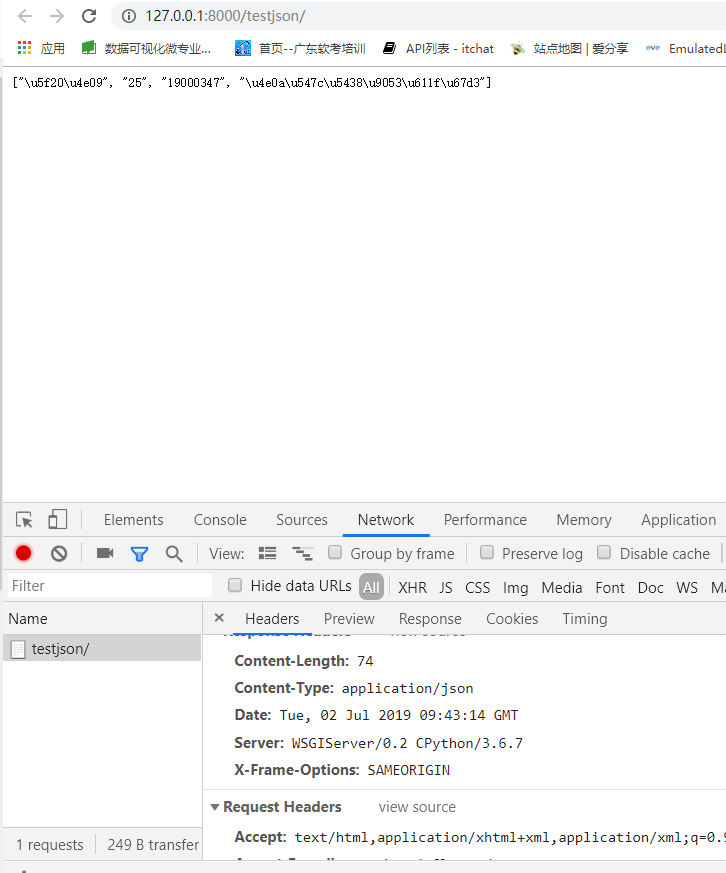
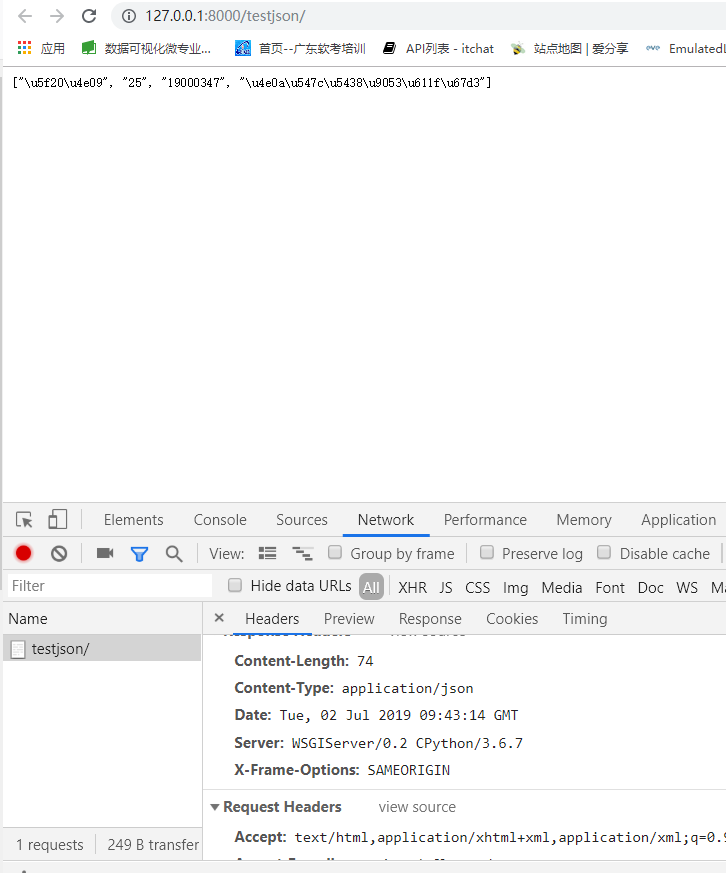
这下正常了。
有时我们从数据库取出来的数据,很多是列表类型的,特别是用cx_Oracle包在Oracle数据库取出来的数据,其不支持直接字典的输出,输出就是一个list,这时我们使用JsonResponse(data, safe=False)就可以直接输换为Json,发送到前端了。
对象转换为json报错
提示: 对象不能直接序列化,待补充